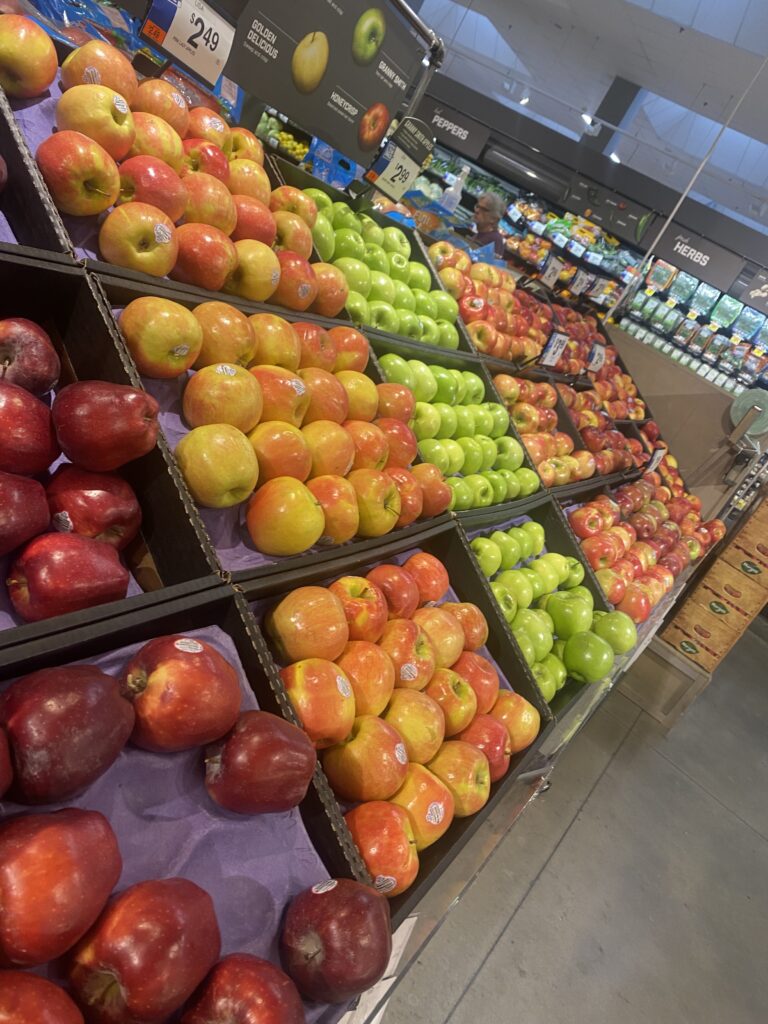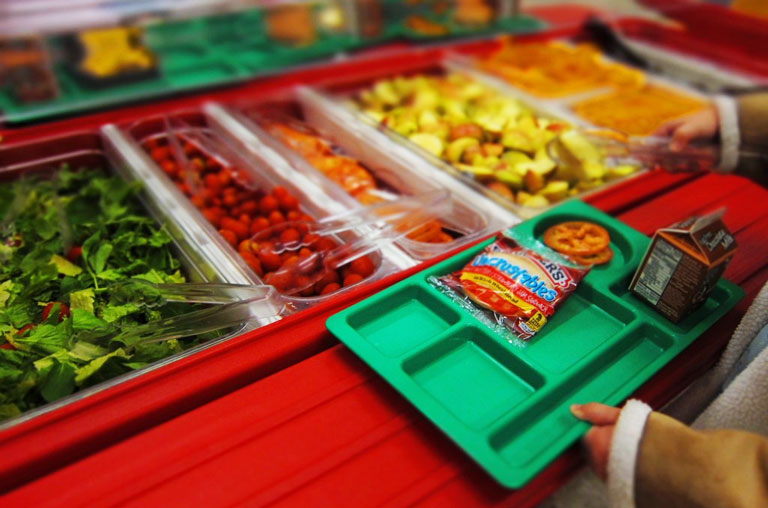On a recent Saturday, several picnic tables-worth of volunteers gathered to chuckle and chat and admire the progress they have made in creating a new Urban Demonstration Garden at the Capital Area Food Bank (CAFB).
The June 15 open house and volunteer appreciation event was an chance to celebrate the growing garden, as well as a growing team of helpers who are making it a reality.
Back in April, when CAFB broke ground on the learning and growing space next to its facility on Puerto Rico Avenue in Northeast Washington, nearly one hundred volunteers cleared 5,000 square feet of sod and prepared more than 1,200 feet of lumber to get the project underway. Since then, friends, neighbors and master gardeners from local universities and community colleges have volunteered their time and energy to move the project along.
“Every weekend we have a bigger group of volunteers,” said Sarah Howell, a volunteer leader who has been a part of the demonstration garden project since planning started back in March.
The site now sports 17 raised beds (3 waiting to be filled), 2 bee habitats, and a tool shed. By the end of the week of June 16, the garden is also expected to have a working rain irrigation system complete with two 5,000 gallon drums that collect water from the food bank’s roof. The water will be pumped through a complex filtration and UV sterilization system before reaching the garden.
At the Saturday open house, the hum of earth-moving equipment was ample music for the volunteers’ celebration as the final pipes in the system were being laid. According to Abby Steiner, the food bank’s Food Growing Capacity Coordinator, the drums fill up after just 2 inches of rain thanks to the large surface of the facility’s roof.
Food bank officials say that even though the garden’s focus is education, it should also yield at least 10,000 pounds worth of fresh food. CAFB distributes 33 million pounds of food annually, which translates into 27.5 million meals, through its 700 partner agencies. The demand for food assistance has grown dramatically over the past several years because of factors such as rising unemployment, slow economic growth, and the high cost of housing and health care.
By its presence, the garden speaks volumes about how much food can be grown with soil, some sun and rain, and some willing hands, Howell pointed out.
“The vision for this space is to serve as a demonstration for the partner organizations the food bank works with. To bring them in and show that whatever kind of space you have available, even just an office with a big yard, how you can [use it to] grow food in different ways,” she said.
CAFB provides education and training to its 700 partner agencies to help address the food requirements of nearly 480,000 area residents. The demonstration garden will help partner agencies and their clients learn how to grow their own food. Steiner sees this form of outreach as a way to build capacity and increase access to healthy food within the network of partners for the people they serve.
“We teach the importance of healthy eating on a budget. We will use this space to help our partners incorporate food growing into their programs. Growing fruits and vegetables stretches a budget and promotes good health,” explained Steiner.
Many of the chronic diseases that affect Americans, particularly those on a low income, can be prevented or managed through healthy eating. Obesity increases the risk of many conditions including Type 2 diabetes, heart disease, high blood pressure, stroke and some cancers.
SEED, Inc. is just one of the partner agencies that has already reaped the benefits of the demonstration garden. SEED is planting a garden of its own in order to supplement the fresh food it incorporates into its pantry service.
The process began when SEED’s outreach coordinator Amanda Knott attended an introductory gardening class at Capital Area Food Bank.
“The class gave me a bag of seeds to plant and many seeds of ideas on how my organization can develop new programs to feed our communities,” reported Knott. “I learned about new ways of growing produce in urban areas where soil conditions are not optimal.”
Seeds provided through National Capital Food Bank’s teaching program include: tomatoes, pumpkins, herbs, peppers and beans. SEED, Inc. also operates a charter school where urban gardening is expected to provide some important lessons.
“We want to teach the kids how to help their families eat healthy food while on a budget,” Knott added.
Sarah Howell said her favorite part of volunteering is being able to see the garden take on a life of its own, through the dedicated work of so many.
“I have really felt rewarded in how quickly we’ve transitioned the space from just a plot of grass. The first weekend I came it had just poured rain for 3 days beforehand, so this was all just mud…”
Another volunteer, Greg Orndorff, who has helped build the bee habitats, said he shares this sense of ownership and fulfillment.
“I actually don’t have a lot of gardening experience,” said Orndorff. “I was looking for a place to spend my extra time and I wanted a learning experience.”
Howell and Orndorff are Northwest residents who both see the flexible time commitment and variety of tasks that go into the project as a great way to get involved in the local community.
That is a real perk of the garden, said Steiner.
“We’ll focus mainly on educating our partners, however we see this as a really great communal space and we want to encourage other organizations that do food growing education, cooking [and] health education to use this space in some capacity, so we’re going to explore what that would look like,” Steiner said. Then she got to work making another batch of mint and lemon slushies for her team.








